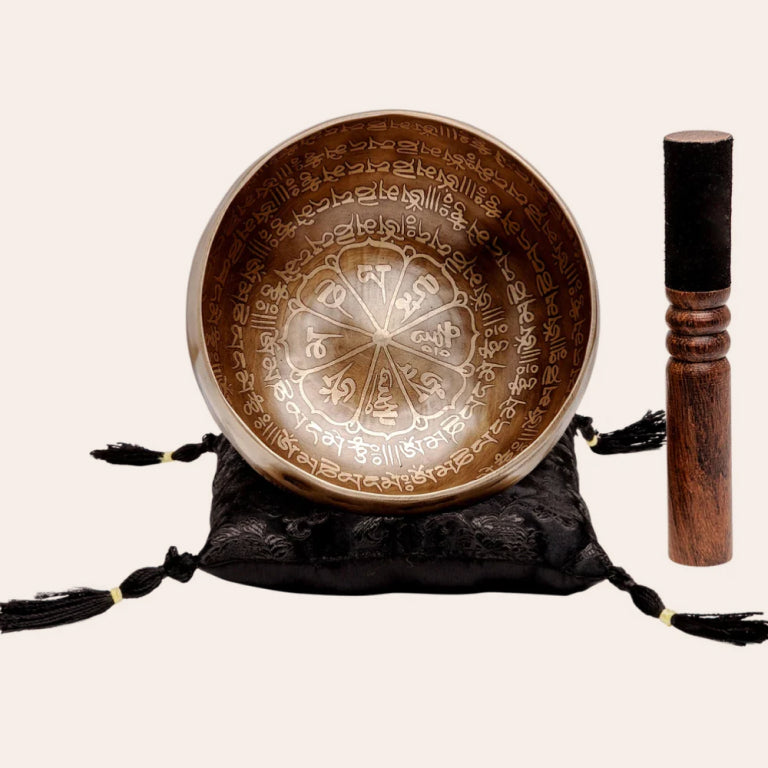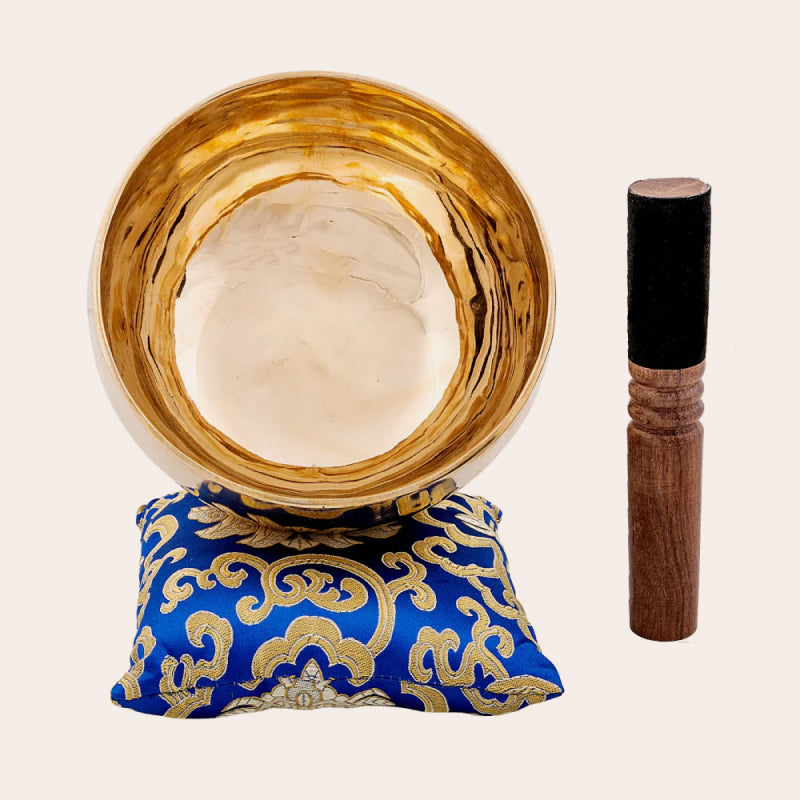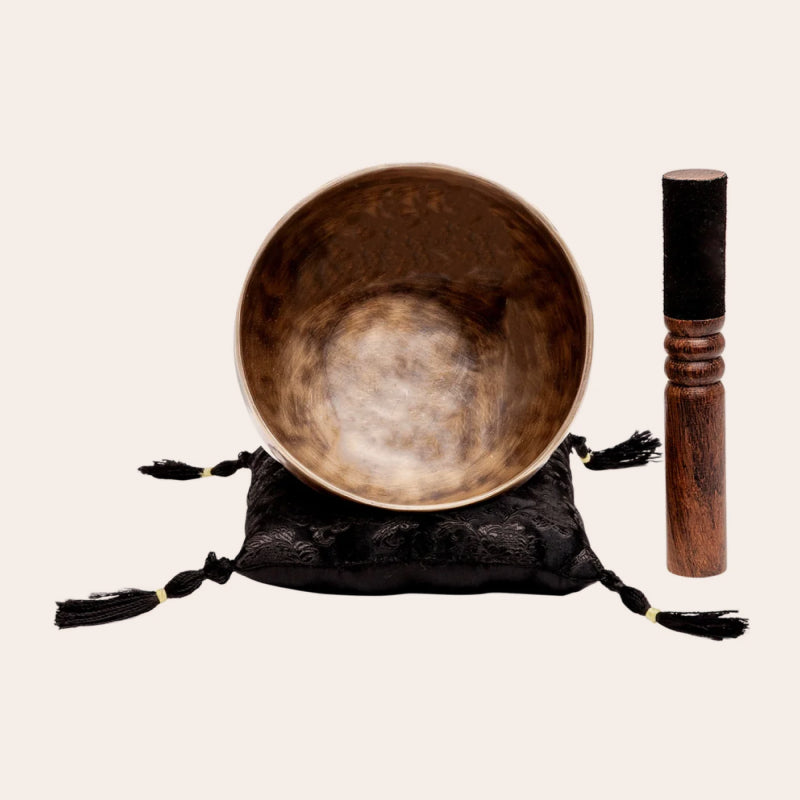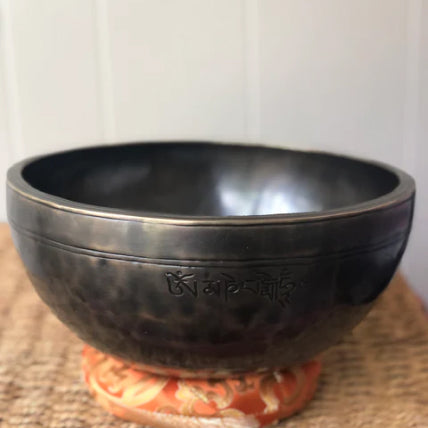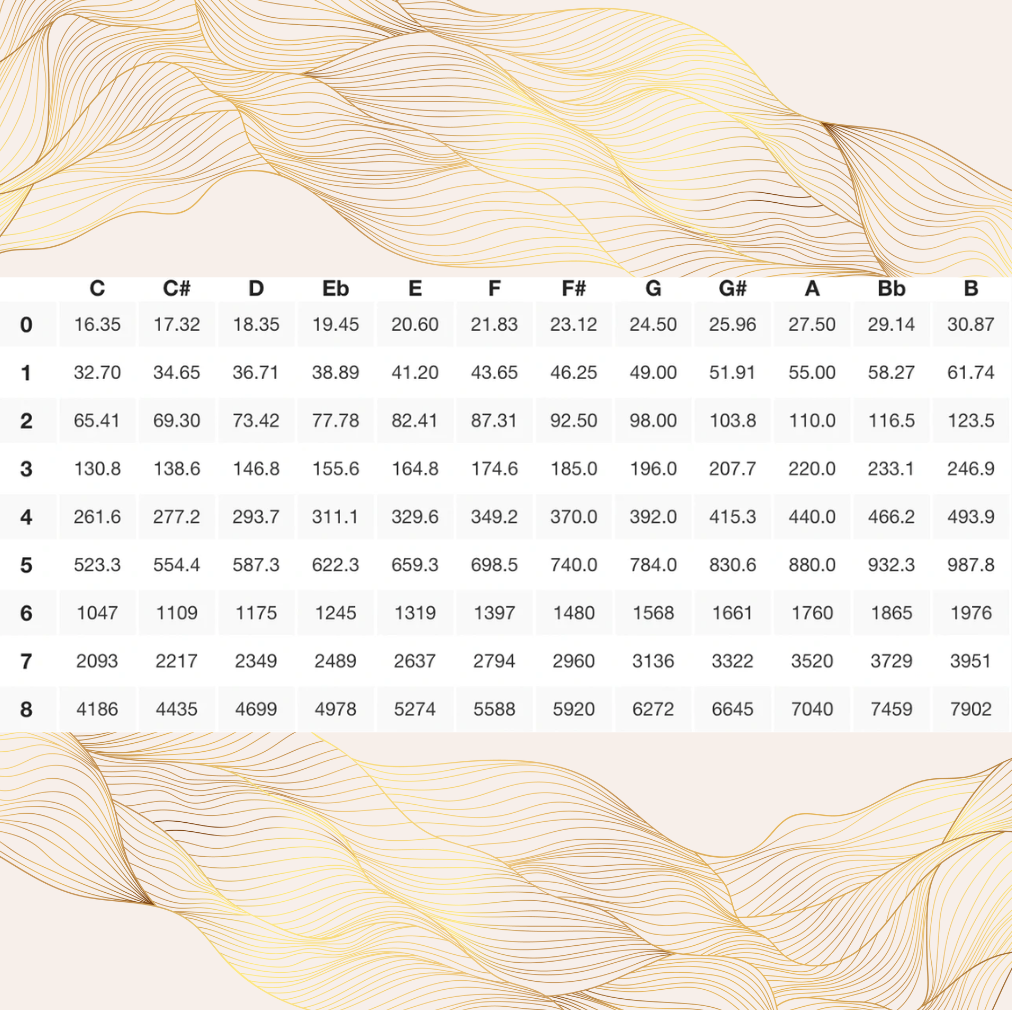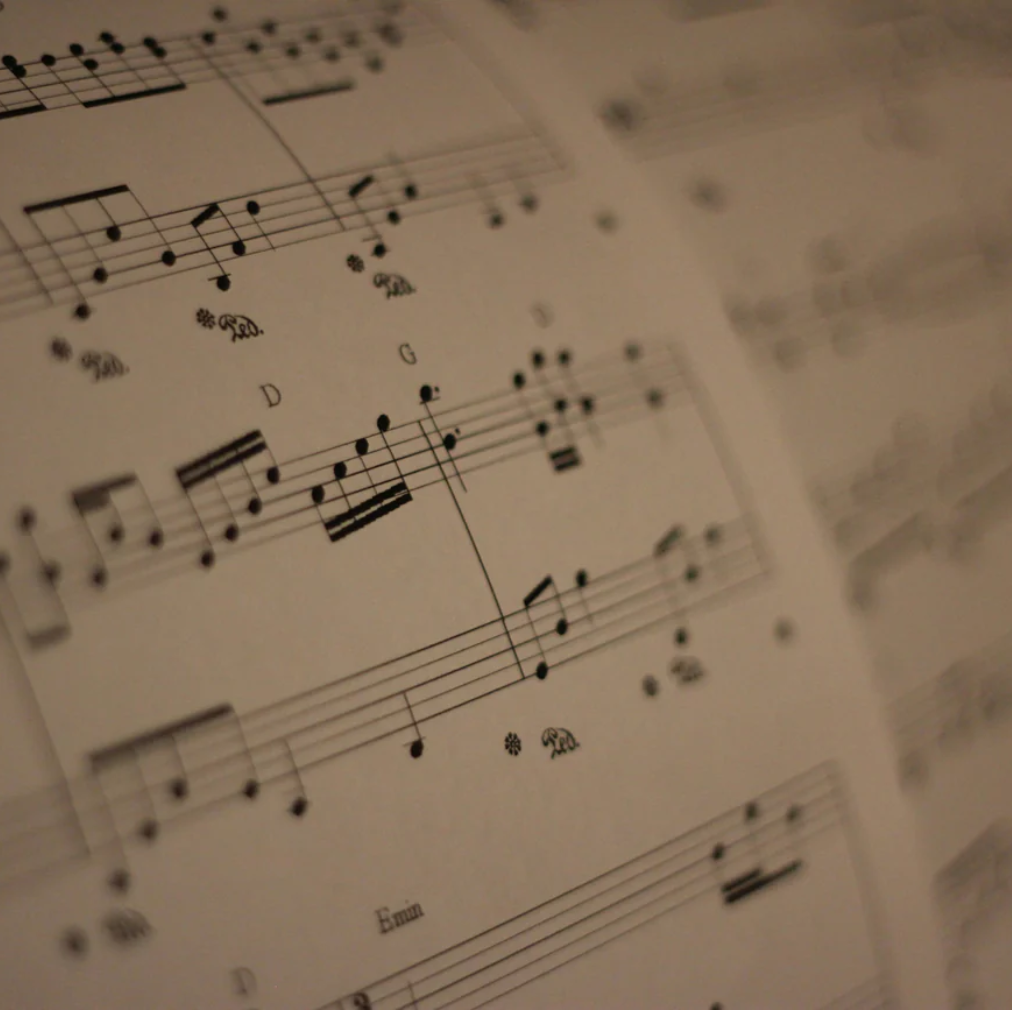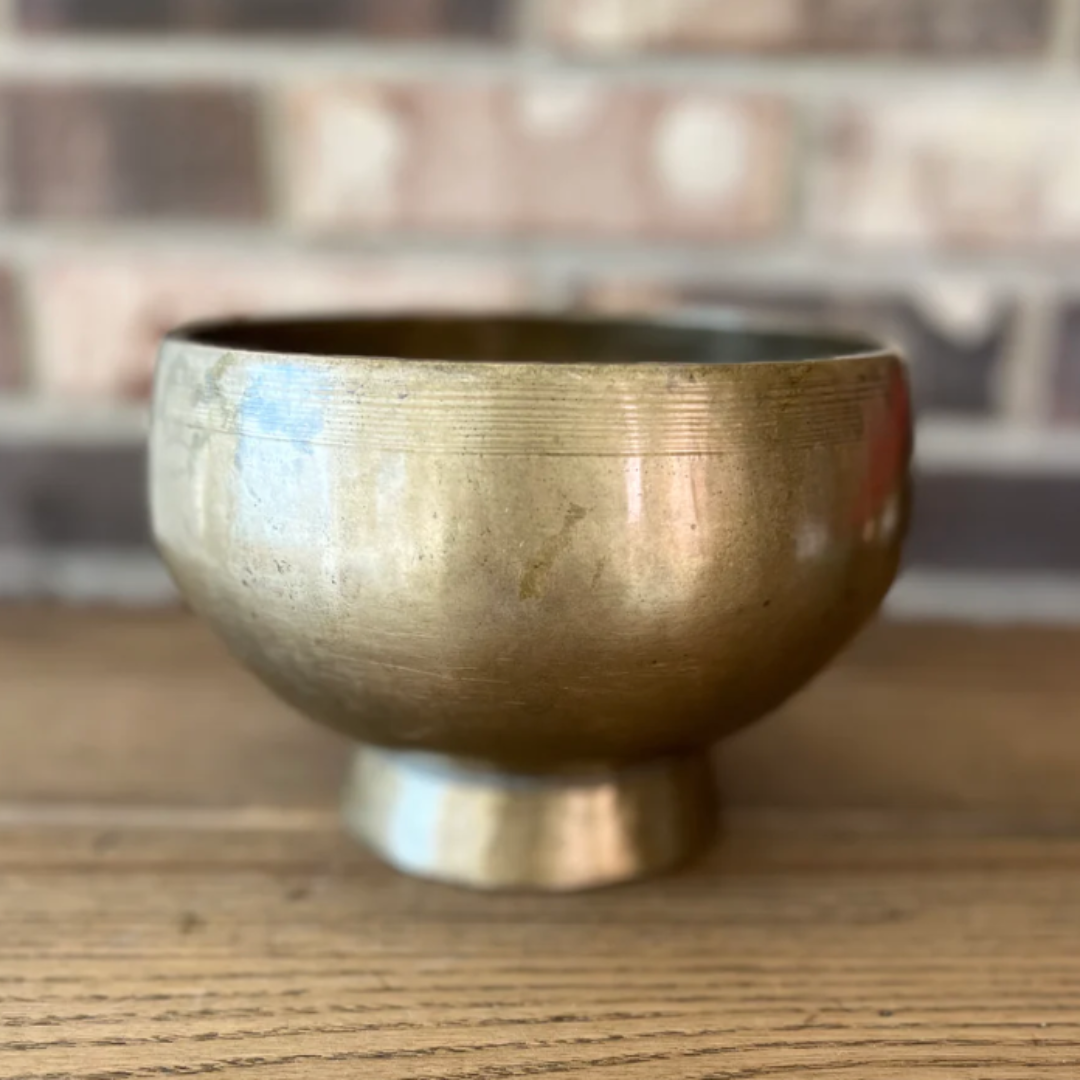Singing Bowls For Geeks: The World Of Octaves, Notes and Frequencies
“What Note Or Frequency Does” this singing bowl play, is a question we’ve received several times per week over the past 9 years. In this article, we’re going to elaborate on the special nature of the handmade singing bowl and help you to understand this unique, one of a kind musical instrument from a musical perspective.
On Octaves
The concept of octaves plays a crucial role in understanding the frequency relationships between different tones. An octave refers to doubling the frequency of the base or anchoring note, which brings the sequence back to its starting point.
For instance, if we begin with an A1 note at 55 Hz, the next octave, A2, would be at 110 Hz. As we ascend through the octaves, the pitch rises accordingly. Each subsequent doubling leads us to higher octaves: A3 at 220 Hz, A4 at 440 Hz, and so forth.
The relevance of this is that we often receive requests for specific notes. For example, “I am looking for a B Note Bowl.”
This is not quite a straightforward request…
The confusion arises, because there has been no octave specified.
For example, desiring a B note from a singing bowl without specifying the octave could result in various B notes, each sounding distinct due to their placement in higher or lower octaves.
Are you looking for a 20 inch, booming B note in the first octave at 58 hertz? Or for a sweet B note in the 3rd octave, in a bowl that’s about 6 inches in diameter?
Determining a Bowl's Fundamental Tone
Singing bowls exhibit complexity in their tonal composition, offering a symphony of sounds upon striking. Put simply, there is more than one audible tone happening at the same time.
This is why 3 “F” notes in the 3rd octave can all sound different; they have different symphonies of overtones playing on top of their fundamental note.
The primary, or fundamental tone of a singing bowl refers to the deepest and most prominent note heard struck with a mallet.
While usually the fundamental note holds dominance, some bowls emphasize overtone frequencies, presenting a different primary tone.
Even amidst varying overtones, our brains distinguish between higher and lower tones when bowls are arranged together (we can hear things better when it is relative to another sound).
Unraveling “Perfect Pitch”
Perfect or concert pitch designates a precise point on the spectrum of tones associated with a particular note.
Musicians discern pitch quality as "in tune," sharp, or flat, with sharp notes slightly higher and flat notes slightly lower than the perfect pitch.
Musicians further refine this distinction by dividing each musical note into 100 musical cents, allowing for meticulous adjustments. Perfect pitch encompasses a narrow range of tones around the ideal pitch, typically within a margin of plus or minus ten musical cents from the absolute center. While some argue for stricter standards, many individuals may not discern minor deviations from this precise center.
The “exactness” of perfect pitch is a rarity in the world of handmade singing bowls. Singing bowl notes often deviate slightly from the exact, distributed evenly between sharp and flat variations. S
Perhaps only 1% of all handmade singing bowls are perfect pitch.
Perfect Pitch and Pitch Memory: A Musical Duet
Perfect pitch extends beyond merely identifying exact notes; it encompasses the ability to discern and replicate pitches accurately, a skill invaluable in tuning instruments.
Widely considered as an innate trait acquired during early childhood, perfect pitch becomes less attainable as individuals mature.
In contrast, pitch memory, a learned skill, enables musicians to retain and reproduce specific pitches, honed through practice and familiarity.
Leveraging pitch memory, musicians can curate sets of singing bowls, selecting those that seamlessly transition between tones, enhancing musical progression and harmony.
Navigating Octaves: “Is This 440 or 432”
There are different standards of tuning, although A440 is the most common.
The "A" note above middle C serves as the anchor for setting octaves, with subsequent notes precisely defined based on mathematical principles.
While Western music conventionally aligns with A440, some proponents advocate for alternative standards, such as A432, positing its purportedly more natural resonance.
This shift in the anchoring frequency affects the entire spectrum of notes, redefining what constitutes perfect pitch across different tuning standards. Despite debates surrounding optimal frequencies, A440 remains prevalent in defining tone standards across various musical contexts.

Conclusion:
Handmade Tibetan singing bowls are rich in overtones, and each bowl is truly one of a kind. Unique amongst musical instruments, concert pitch is a rarity – and in this case, it is a feature, not a bug. It adds to the mystique and ethereal nature of the sounds of these special bowls.
**image of chart reproduced from seventhstring.com

